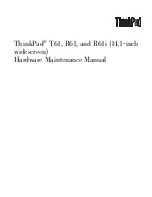
{OWNER {
owner-id
}
where
owner-id
is either
groupname
,
username
or
groupnumber
,
usernumber
.
This parameter specifies the userid under which all RDF processes will always run. This
global configuration parameter provides functionality whereby any super-user group userid
can start and stop RDF.
Once the OWNER attribute is set, you must limit EXECUTE access to the RDFCOM object
so that only those super group users authorized to manage RDF can run RDFCOM. Failure
to do so is a serious security risk because, thereafter, all RDF objects run as the userid of the
RDF OWNER.
To illustrate this functionality, imagine ten users are responsible for managing a particular
RDF configuration and that SUPER.RDF is configured as the OWNER. Instead of providing
all ten users access to the SUPER.RDF userid, each individual user can be assigned a separate
super-user group userid. If one user is assigned SUPER.FIRST and another SUPER.SECOND,
for example, they can both log on with their userid and be able to start or stop RDF. The RDF
processes do not run under SUPER.FIRST or SUPER.SECOND, however, but under
SUPER.RDF (the RDF OWNER assigned during configuration). The same principal applies
to the other eight users.
By default, this attribute is not set, and therefore is not included in the INFO RDF output.
The userid associated with OWNER must be a valid Guardian userid and must identify an
existing user account on the RDF primary and backup systems. The OWNER must also be a
member of the super-user group, which is a requirement in RDF for stopping and starting
RDF.
OWNER is an unalterable value. You need not change the value, unless you configured it
incorrectly (in which case you must reinitialize RDF with the correct value).
If the OWNER parameter is omitted, only the userid that initializes RDF can start or stop
RDF (as is true for all versions of RDF prior to 1.7).
Where Issued
Primary system only.
Security Restrictions
None.
RDF State Requirements
None.
Usage Guidelines
The SET RDF command enters the global parameter values specified in this command into the
RDF configuration table in memory. This table serves as an input buffer only, and so these values
do not affect the subsystem until they are applied to the RDF configuration file with the ADD
command.
SET RDFNET
The SET RDFNET command sets RDFNET process configuration parameters within the RDF
configuration memory table. The supplied values are not applied to the RDF configuration file,
however, until you issue an ADD RDFNET command.
SET RDFNET netsynch-option
where netsynch-option is:
{CPUS primary-CPU : backup-CPU }
RDFCOM Commands
231
Содержание NonStop RDF
Страница 68: ...68 ...
Страница 186: ...186 ...
Страница 260: ...260 ...
Страница 278: ...278 ...
Страница 284: ...284 ...
Страница 290: ...290 ...
Страница 308: ...308 ...
Страница 322: ...322 ...
Страница 336: ...336 ...
Страница 348: ...348 ...
Страница 464: ...464 ...
Страница 478: ......
















































